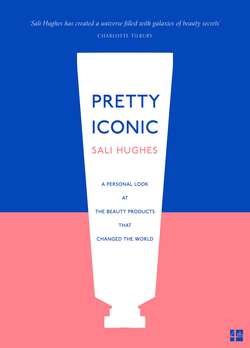Читать книгу Pretty Iconic: A Personal Look at the Beauty Products that Changed the World - Sali Hughes - Страница 46
Vaseline Petroleum Jelly
ОглавлениеIn terms of iconography, Vaseline is the Campbell’s soup tin, Coke can or Brillo pad box of beauty. Practically everyone owns it, and those who don’t could readily identify its blue-capped jar – and probably list at least five uses for its contents, some of them downright filthy. Robert Augustus Chesebrough, a 22-year-old British chemist, could not have conceived of such success when he invented Vaseline by chance in 1859. He was visiting a Pennsylvania town where petroleum had recently been discovered. He became intrigued by the by-product of the oil-drilling process and observed the oil workers rubbing drill residue into their cuts and burns to heal them. Inspired, he triple-distilled it, cleaning out impurities (Vaseline is still the only petroleum jelly that goes through this process), perfecting the formula over ten years. He then opened a factory in New York and got on his horse and cart to sell his ‘Wonder Jelly’ to the public (mainly by burning himself with acid before an audience, then smearing the wound with it, like some sort of lunatic).
It was a massive success. He renamed it, expanded his distribution, and soon found himself at the helm of a large beauty brand, growing by the month. His petroleum jelly was taken by explorers on the first successful expedition to the North Pole (on account of it not freezing), was made standard issue for US soldiers in the trenches of the First World War, coated special healing gauze for use on the front line during the Second World War, and was stocked in both hospitals and home first-aid kits. A tub of Vaseline is sold every thirty-nine seconds somewhere in the world, and is utilised in a vast petroleum-based product range. Poured into a tin it becomes Vaseline Lip Therapy, the world’s biggest lip brand. Whipped with glycerin into lotion, it becomes Vaseline Intensive Care Lotion, the first port of call for many dry skin sufferers. In beauty alone, it has endless applications. It slicks down unruly brows, adds sheen to cheekbones, mixes with any powder to become coloured gloss, adds shine to legs, removes old glue from false lashes, blends with sugar to act as a lip scrub, diverts self-tan headed for dry spots, and lines cuticles to prevent nail polish migration. It is never missing from photo shoots, where in the past it even greased up camera lenses to give film stars a misty, otherworldly glow.
I myself am not the biggest fan of paraffins and mineral oil in expensive products (although my skin doesn’t particularly object to them). I believe that brands expecting you to spend big bucks on skincare should first dig deep into their own pockets and use much nicer plant oils that won’t cause breakouts. But in products as cheap as Vaseline, I’m more charitable, if not a particularly committed user myself. There’s an honesty here. What you see is what you get – a cheap, greasy petroleum jelly that fulfils its promise to temporarily moisturise, lubricate and seal. It is deeply unpretentious, egalitarian, often appropriate and much loved by millions. In my view, there are now far better products for each one of its uses. But none that do all of them at once, and certainly none as truly iconic.
